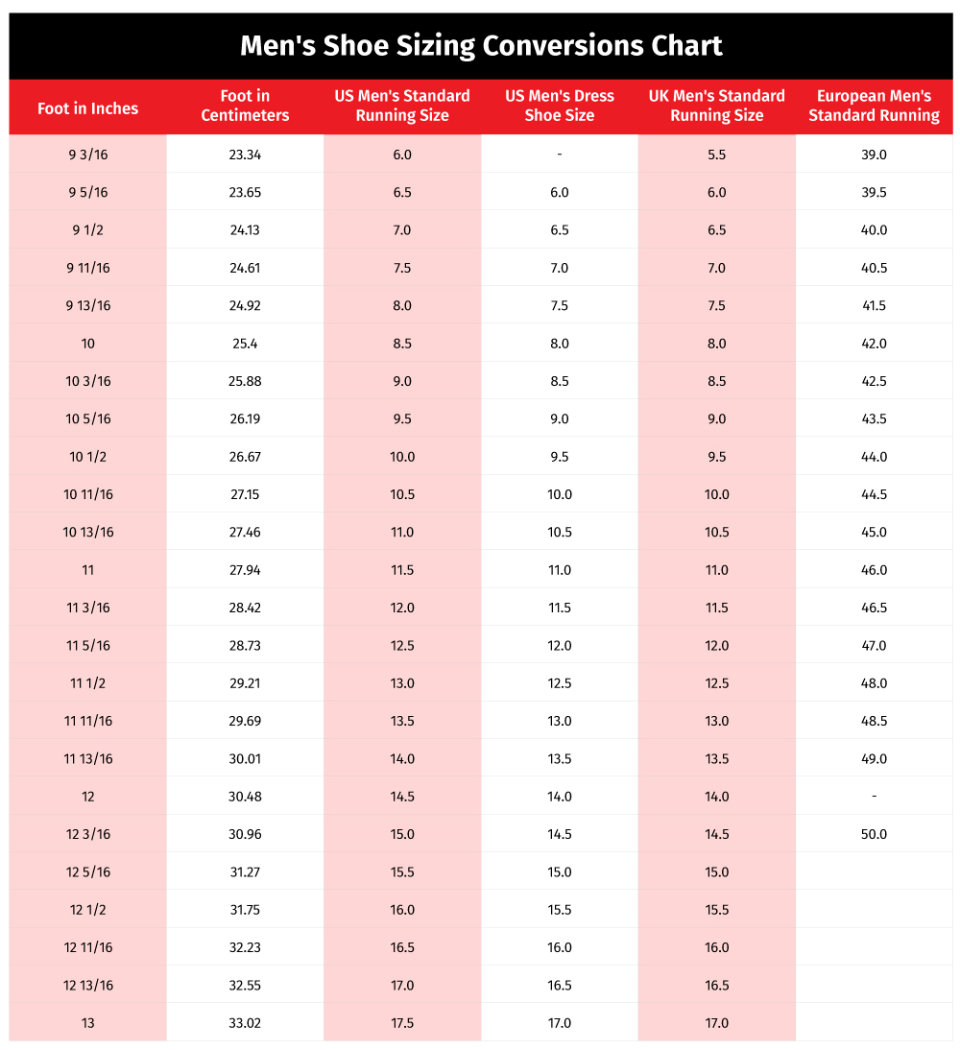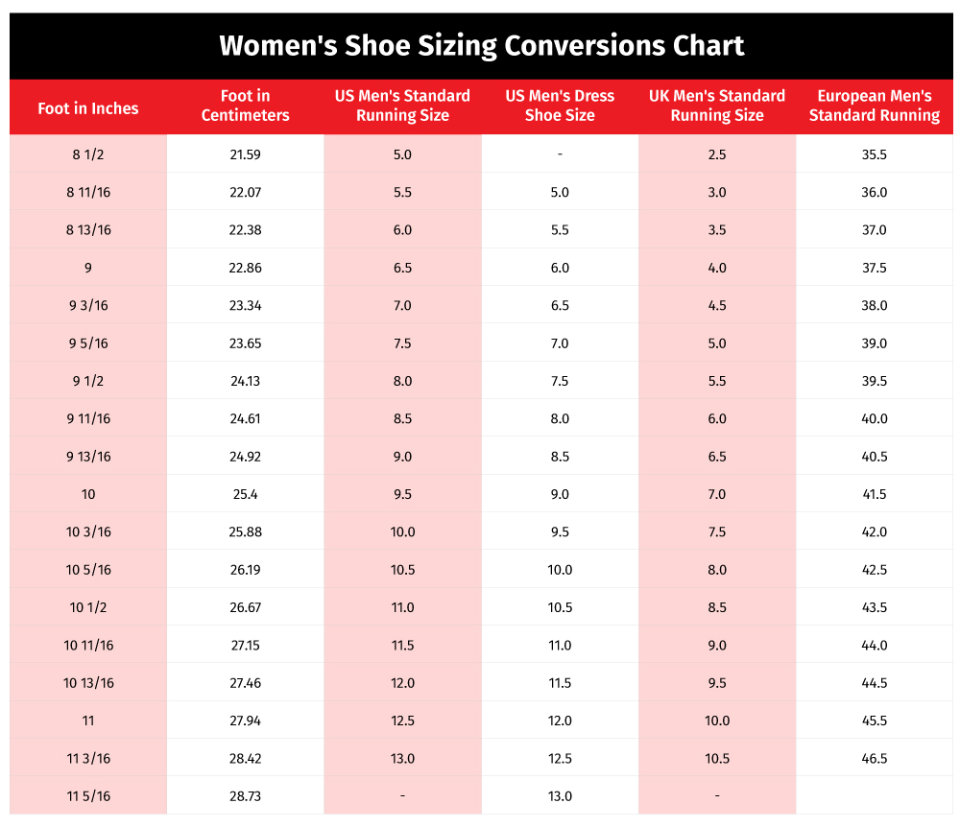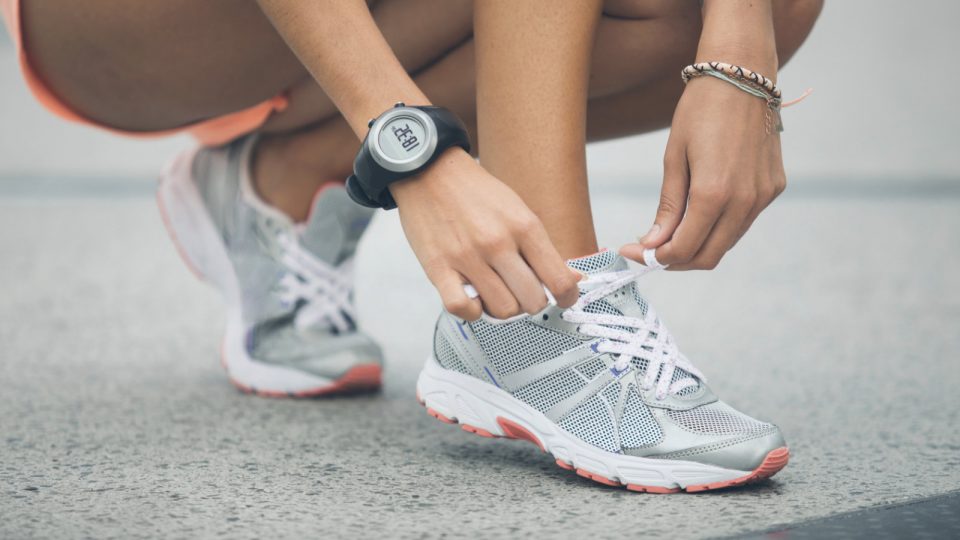Whether you picked up running for the first time or are training for your 11th marathon, running shoes can make or break your workouts.
The first step to getting the right fit, though, is to properly measure your feet.
Once you have that number, you’ll likely find a suitable pair and start training in comfort.
In this article, I’ll discuss the importance of knowing your shoe size, how to measure it at home, and how running shoes should fit. By the end, you’ll have all the tools you need to find that ideal fit.
The Importance of Proper Sizing
If you’re still reading this article, then you know a thing or two about the importance of proper shoe size.
As a runner, improper footwear can cause issues that will compromise your training. Shoes that are too big can result in blisters and heel pain, whereas tight ones can damage your toes and mess up your gait.
What’s more?
If you already have an existing condition, the wrong pair will only make it worse.
For example, if you have diabetes, using the wrong size can increase your risk of developing foot ulcers, which may lead to amputation and other health complications.
Here’s more bad news.
Most people might actually be wearing improperly sized shoes.
Don’t take my word for it. According to research by the American Orthopedic Foot and Ankle Society, about 70 percent of men and 88 percent of women use footwear that’s the wrong size for their feet.
I hate to be the bearer of bad news, but there’s a high chance that you’re actually in this percentage.
But fret no more. Keep on reading to learn how to match your feet size with the perfect pair of running shoes.


The Process Of Measuring Running Shoes Size
Finding proper shoe size is not rocket science and can be done in three easy steps.
- Step – 1: Determine your foot size
- Step – 2 Use a sizing conversion chart to determine shoe size
- Step – 3: Make sure you have the right fit.
Let me break down each step.
The Things You Need
To properly measure your shoe size, you’ll need a few things at hand. These include:
- Tape measure or ruler
- A piece of paper or cardboard bigger than your foot
- A pen
- A steady hand
- Patience (and lots of it)
Step 1 – Measure your Feet
This is the first step and the most important one to get right.
I’d recommend that you get your feet measured at a running specialty store by a professional who uses a Brannock device.
This tool is helpful since it can accurately measure the width of your foot.
Don’t have access to one? No problem.
Use a tape measure or a ruler to find the ideal width of shoes for your foot—just make sure to follow the below.
Here’s what you need to do.
The Right Surface – Begin by finding a hard and flat surface, then tape a piece of paper to the floor, preferably against a wall.
The Right Socks – While wearing your running socks, stand on your right foot on the paper.
The Right Take – While keeping your weight over your right foot, draw a thin line around the outside of your foot. Hold the pencil as straight up as possible the entire time.
Length & Width – While using a tape or ruler, measure your tracing to figure out your foot length and width. For foot length, measure vertically down the length of your foot. As for width, measure the distance between the two widest points on your foot tracing.
Measure Both Feet – Your right and left foot are usually of slightly different lengths—the dominant foot is often the larger. That’s why you need to repeat the above steps on your left foot but then use the larger foot measures when deciding footwear size.
And that’s all. See, it’s that easy.
Note –perform this measurement in the evening, the period at which the feet are as swollen as they can get.
Step 2 – Get your Shoe Size
Once you have the data, use the following sizing chart to get the figure.
All you have to do is to match the measurements you took with the recommended running shoe size. Remember to check for size in the proper column, either men’s or women’s when trying to figure out your size.
Step 3 – Make Sure The Shoes Fit
Even if you find a shoe of the correct size or brand, it’s no guarantee that it will actually work for you.
Your running shoes should tick the following boxes.
- Comfort. The shoes have to feel comfortable from the get-go. They should feel like an extension of your feet with as little constriction as possible.
- Running shoes are special – Running shoes are usually a half size—even a full size—bigger than your standard, casual shoe. They should be a little bit larger are better for training than shoes that are too small.
- Foot type. Whether you have a neutral arch, low arch, or high arch, make sure your running shoes suit your foot type.
- Fit your larger foot. Usually, the dominant side is bigger than the other—in fact, your right foot and left may differ in size by as much as a full size.
- Toe box – Aim for at least a thumb’s width space between your longest toe and the end of shoes. Your toes should have plenty of space to splay sideways without pressure.
- Heel – You should feel your feet securely locked in the shoe with no slipping when walking or running.
- Match the terrain. Road running shoes are designed for the road, whereas trail shoes are made for the trail. Keep that in mind.
- Try then try again. Don’t get fixated on one pair. Instead, try at least three to five pairs before you make up your mind.
There are many things you need to consider and steps you need to take to ensure you have the right pair. And this is the case whether you’re training for your first 5K or have been around the running block for a while.





